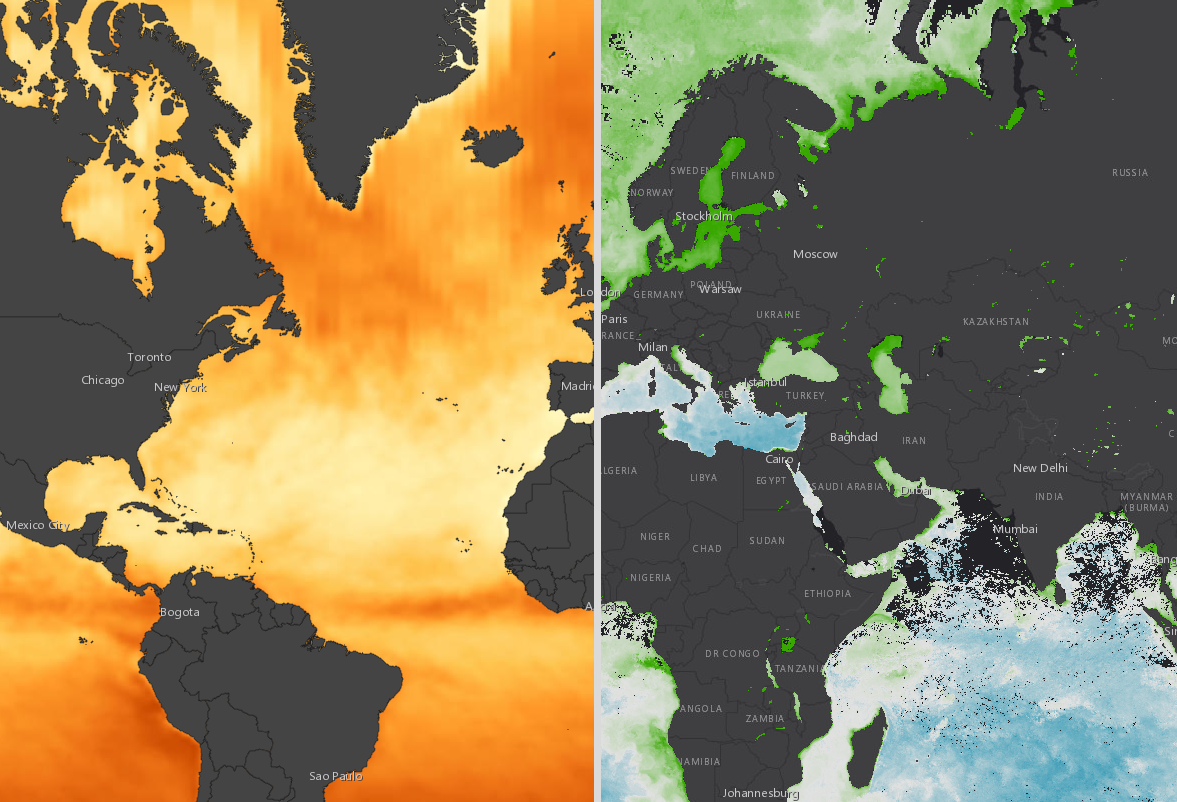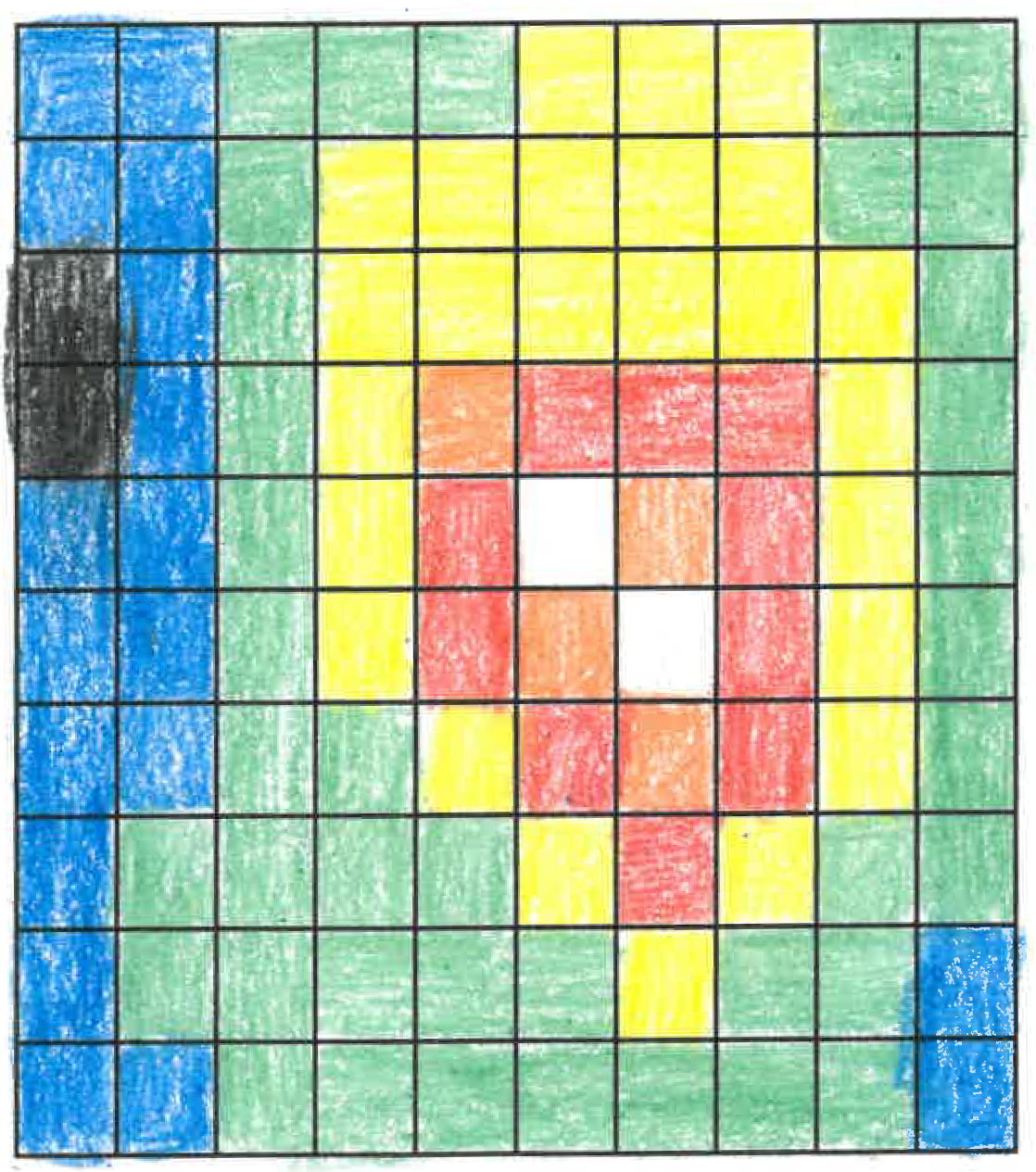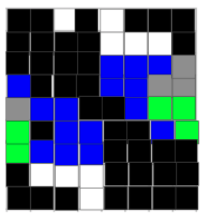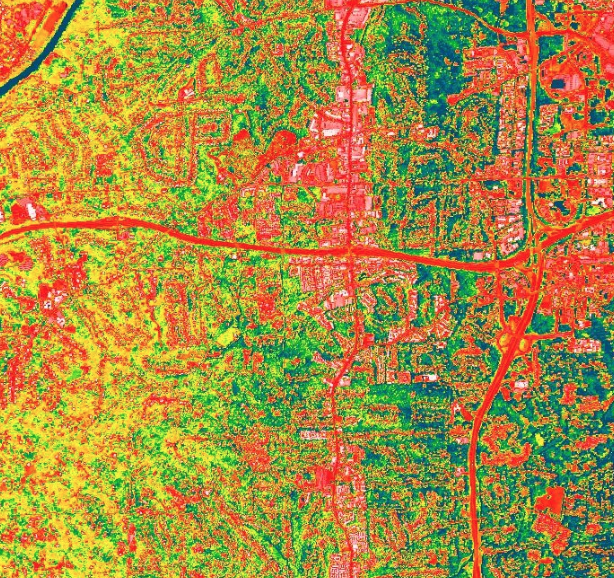Students identify patterns in chlorophyll concentration data to formulate their explanations of phytoplankton distribution.
List of all Biosphere Interactives




Students will identify and describe the relationship between watersheds and phytoplankton distribution.
Students identify patterns and describe the relationship between chlorophyll concentration and incoming shortwave radiation.
Students will describe how the spread of COVID-19 is affected by population density and explain why patterns in the spread of COVID-19 are happening over time.
Students will identify and describe the relationship between land cover classification and surface temperature as they relate to the urban heat island effect. Students will also describe patterns between population density and the locations of urban heat islands.
Students will analyze how surface (skin) temperatures vary across a community and determine what factors contribute to this variation. Students will describe how human activity can affect the local environment.
After learning about the different characteristics of satellite data, students will describe the advantages and disadvantages of using two different satellites to study the Urban Heat Island Effect.
Scientific data are often represented by assigning ranges of numbers to specific colors. The colors are then used to make false color images which allow us to see patterns more easily. Students will make a false-color image using a set of numbers.
Information from satellites if often used to display information about objects. This information can include how things appear, as well as their contents. Explore how pixel data sequences can be used to create an image and interpret it.
This StoryMap allows students to explore the urban heat island effect using land surface temperature and vegetation data in a 5 E-learning cycle.














